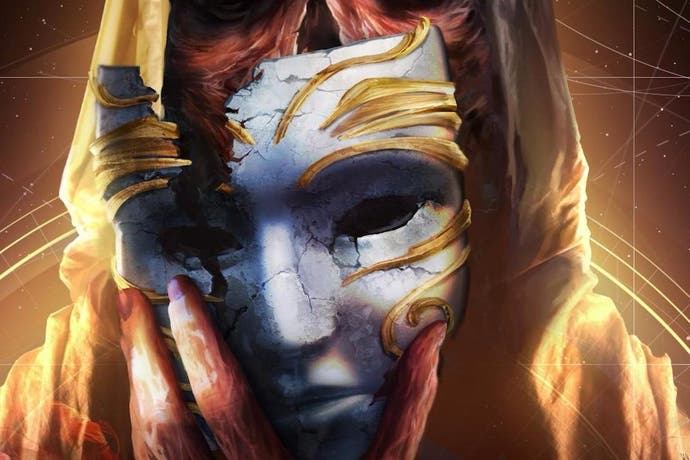The making of Torment: Tides of Numenera
A written and two-hour podcast accompaniment.
One 4am nearly five years ago I ended a Skype call and went to sleep, but two of the people I was chatting to stuck around. They were Chris Avellone and Colin McComb. I had been speaking to them, and others, about Planescape: Torment, a game they all helped make. And it was a really good game. A legend, if you like.
We'd assembled for a Planescape: Torment postmortem podcast, and now, five years on, we're here to look back on the development of Torment: Tides of Numenera for a podcast - and written article - too.
Back then no one had any idea Torment: Tides of Numenera was going to be made. McComb didn't know he would be creative lead and Adam Heine didn't know he was going to be design lead. They weren't even really in the business of making games anymore - Heine lived and still lives in Thailand raising orphans, and the reason McComb had stuck around was to ask Chris Avellone about getting a job, writing for Wasteland 2.
Well, McComb got it, and not long after he got a phone call from inXile boss Brian Fargo. "So Colin," Fargo said. "I've registered Torment as a trademark, I managed to pick that up. And I was curious if you would be interested in working on that... as the creative lead?
"Holy crap, Brian!" was McComb's reaction. "I can't believe what you're asking me to do here. I know how people feel about Planescape: Torment - I know how I feel about Planescape: Torment. If you screw that up then your reputation is ruined forever."
But he agreed, emailed Heine - "do you want in?" - and the rest is a history I will be going over in detail here. Be warned! There are massive spoilers ahead. Oh, and there is talk of the missing stretch goal content - so hold your horses, it's coming.
Where do you begin making a successor to Planescape: Torment when you don't have the weird Dungeons & Dragons campaign setting of Planescape? You go big. You create your own world and as ambitious a story as you can manage.
That story had a Changing God even back then, although as an actual god rather than a man who discovered a kind of immortality through cloning and consciousness transfer. "He basically fractured," says McComb. "Your job was to go and retrieve his pieces before the Angel of Entropy - which became the Sorrow - destroyed them all and wiped out ... the universe." Problem was, "it was too epic", he adds. "It's not just save the world, it's save all of creation." It just wasn't Torment. But then, what was?
In pondering the answer, McComb and Heine created their design pillars and nailed their essential question, 'What does one life matter?' (Planescape: Torment asked 'What can change the nature of a man?') McComb also realised the Numenera RPG he was helping his friend Monte Cook with might make a fantastic setting for his own game. Things started falling into place, and after weeks of working on spec, the Kickstarter make or break day arrived. Would Planescape: Torment fans go for it? "Or," McComb says, "would they say, 'Oh my god you guys are just vultures picking at a carcass?'"
The campaign went live on March 6th 2013. Adam Heine was watching the 1996 Tom Hanks film 'That Thing You Do' at the time it all started. "There's a montage scene in that movie where the band is just skyrocketing and they're jumping up the bestseller charts," he says. "And I'm watching the scene, and I'm watching the Kickstarter on the screen right next to me, and the numbers are going up and I was just like, 'Holy crap! What's going on?!'"
Torment: Tides of Numenera was funded in six hours, smashing its $900,000 goal. Money flooded in so quickly the team struggled to keep up. "We didn't even have enough stretch goals ready so we were just scrambling to get stuff put in there," says McComb - a point which came back to bite them in the bum. It was also clear from the record-breaking final take of $4.19m that no way was this suddenly much bigger game coming out in a year.
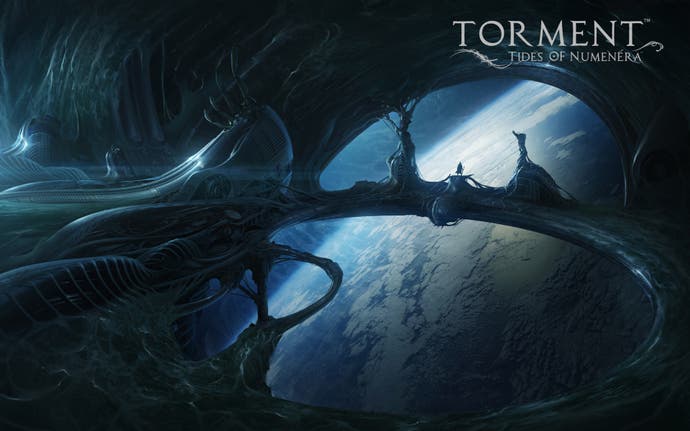
After the madness of Kickstarter, McComb, Heine and team had roughly three months to whip up a plot for a writers' meeting in July 2013. And this is where we begin venturing into spoiler territory.
"The player still falls from the sky, lands in a junk heap, gets picked up by a guy called the Clock Maker, who sort of rebuilds you and nurses you back to health. You head up to an aldeia [a village], you meet some Aeon Priests who tell you about the Sorrow that's chasing you. You board The Catena, the one that crashed into the Bloom, and you take it and you crash it into the Bloom.
"You do some Bloom stuff and you climb up the mountain to Sagus Cliffs, and you do a whole bunch of Sagus Cliffs stuff. You travel from there along the shores of the sea. You hit the Valley of Dead Heroes, you go into a library, then you go into the Castoff compound and that's when the Sorrow comes in. And from there you take an airship up to the Oasis, and from the Oasis you head over to Ossiphagan, and from Ossiphagan you had to..."
It was bam, do a thing, bam, do another thing, bam, etc. Your motivation was always to go somewhere else, never explore, never get to know an area as with the city of Sigil in Planescape: Torment. "If we could make a 200-300-hour game it would be cool," Heine jokes. But they couldn't so it had to be trimmed.
"We went through seven or eight really major iterations," says McComb, "and each time the pace and experience and the delivery of everything we were trying to convey became much more focused and concise."

What remained constant was the idea of the Changing God, falling from the moon after an attack by the Sorrow, departing the body you are suddenly awoken in. But there were some major differences about where the story would end up. Another spoiler alert!
Originally, you were going to meet the Changing God, and come face to face for a showdown. "You were going to finally meet him at the House of Empty Time," says McComb. "We salvaged that into something else. It was originally his home on an eyrie some place. And you and the First [Castoff] would both be transported there and you were essentially trying to get through his futuristic fortress as he's trying to [race] you back to where the Resonance Chamber crashed. There would have been a great big confrontation there. But again, it was wildly ambitious and way out of scope."
Back then The Specter was intended as something unrelated. "The Specter was originally going to be a memory virus," he says, "growing and taking shape in your head, and would eventually be born into the real world." But then someone said, "Well what if the Changing God actually didn't get driven out of your body?" And then came the question-slash-realisation, "Holy shit! What if The Specter is actually the Changing God?!'"
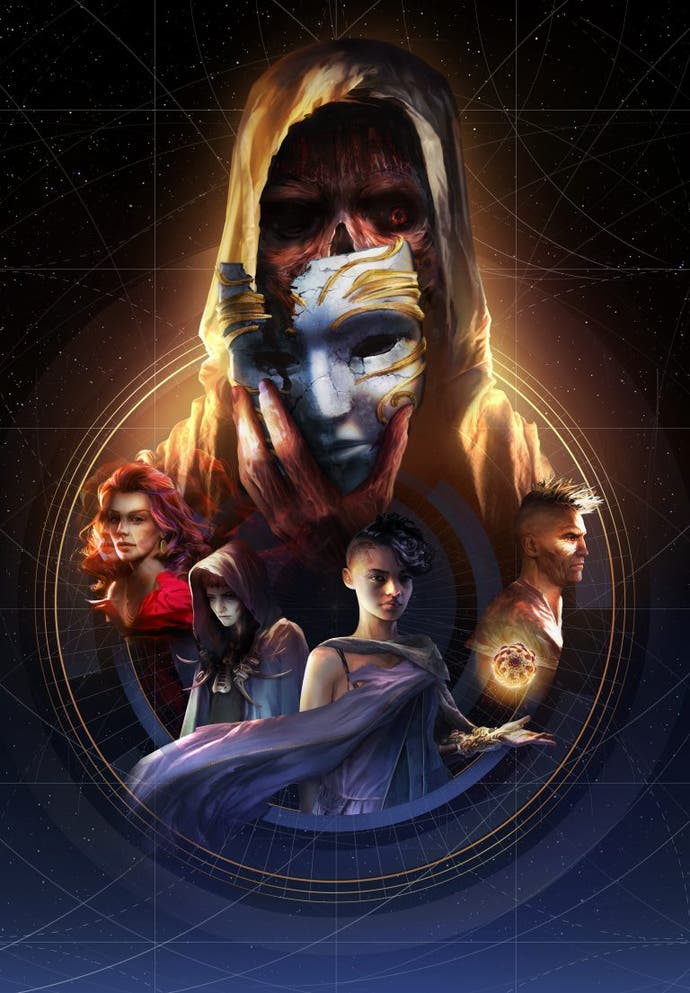
Except, is he? I interrupt McComb and Heine here, because in the game you discover The Specter is not really the Changing God but a copy. One that's constantly updated, and one that's incredibly complex, but not the real deal. And I wanted more than anything to meet the real deal. "Well," says McComb, blindsiding me, "it could be you."
The ambiguity is absolutely intended, and actually if you look through the game there is a solid path available to role-play as the Changing God. "If you make the case that you're the Changing God throughout the game, if you say to yourself, 'I am the Changing God,' then it actually becomes more real," says McComb.
Think about it. If the Changing God were not you then where is he? The Specter lives inside your head, and you can enter the Changing God's memories from inside there. Why? You can also merge all Castoffs into your consciousness, exactly as the Changing God wanted to, thereby satisfying the Sorrow and ridding yourself of her relentless menace forever. Makes you think, doesn't it?
Oh and talking of the Sorrow, did you know she is non-organic? "She - sorry, it - is a biomechanical creation that is essentially a generated energy field," explains McComb. A kind of extremely advanced security program to protect the Tides, which are the currents of human emotion Castoffs are destroying.
Originally the First Castoff was different too. She isn't actually the first Castoff at all. "She's definitely not," says McComb. "One of the original ideas for her is that she went around hunting down older Castoffs to eliminate them." Consider the Changing God is several thousand years old and the First Castoff is several hundred years old, and that the Changing God casts off a body every couple of decades, and there must have been many Castoffs by the time the so called First awoke.
What's more, the First Castoff was nearly someone else, someone close to you. Not Callistege, which was my guess, but Matkina, your Castoff assassin pal. "The original design for Matkina had Matkina as the First," reveals McComb, "because she was an assassin in the shadows and her name was derived from the Vietnamese word for 'mask', 'mat na'. We also discovered 'matkina' means 'mother's' in Slovak, and thought that was a cool extra layer of meaning."
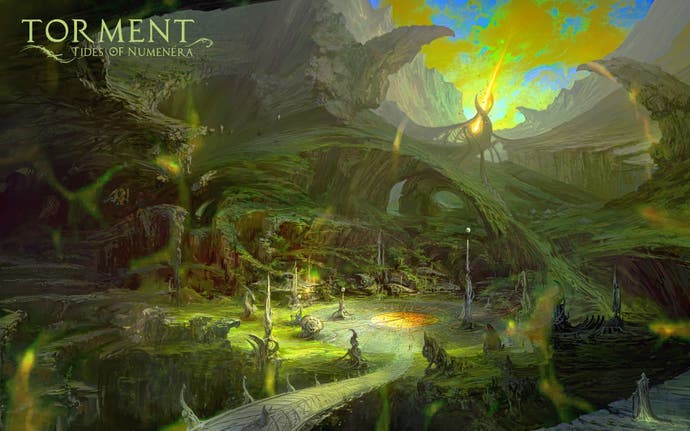
The stretch goal content that didn't materialise includes three companions, a crafting system, and an area called The Oasis. InXile has publicly apologised about this before.
The tricky thing in talking about the missing companions is that at least one of them, Oom, the Toy, will reappear. InXile announced this recently. So McComb and Heine don't want to say too much.
Oom is a blob of a creature from a prior world, maybe a byproduct of an ancient experiment. He could change shape as he levelled up, but into what would depend on you. If you kept telling him to be quiet, for example, he might become invisible, wrote Adam Heine wrote in an Oom blog post.
Heine tells me now: "We have a lot of design for him and we have some words written for him. The issue is that he's... different than all the other companions. There's a lot of custom stuff that has to be made for this guy."
"He's got five different shapes," adds McComb. [He has clarified since that Oom will have not five shapes but "multiple".]
The other companions who really nearly made it in are Riastrad and Satsada, the star-crossed lovers. "Riastrad is mentioned a couple of times in the game," says Heine. "When you find the Magmatic Amulet and you're reading the Changing God's journal of what happened to him in that lab ... that is Riastrad's birth you're witnessing."
"His backstory," continues McComb, "is the Changing God fell into a dark place in the Ascension, with all the crystal and stuff around there. Crystalline spiders started coming out of the woodwork and the Changing God was like, 'Screw this! I'm out of here.' And Riastrad awoke."
Excitingly, Riastrad was to have his own reusable merecaster - a device the Last Castoff uses to time travel via memories, and even alter reality - and it was intrinsically linked to his character development. "You could change his history throughout the game and basically use that to change his abilities," says McComb.
Talking of meres, they were originally going to be fully realised scenes rather than picture book interactions, and the team used to refer to them as Quantum Leaps!
Beside Riastrad, Satsada and Oom there were companions who weren't as developed. In the original conception, The Specter was one, would you believe. There was a crippled beggar, too, who had a floating cart and collected numenera, the mysterious magical items of the world. The beggar went quite far through development, as first a companion then a major NPC, then a minor NPC, then "he sort of slid on out of the game", says McComb. "The problem with him was we looked at the party composition and we were like, 'Crap, we're overloaded on nanos.'"

The Oasis - The Oasis of M'ra Jolios to give it its full name - was to be a huge aquatic dome of a city in the middle of a desert, and the game's second major hub. It was a $4m stretch goal but it never made it in. Well actually that's not correct - it sort of did. Right at the end of the game you can visit a small part of the Oasis in a Fathom portal in your mind labyrinth. It's the Fathom you swim around in, as you would have the Oasis.
"See, the swimming was really cool but it was also a lot of trouble," says Heine. "If you watch carefully when you're in that scene, you'll notice that a lot of animations you have [normally], you suddenly don't have - which is not noticeable in that Fathom because it's a very short time and there's no combat in it.
"We were like, 'OK, well, we could build this up into a big city and make the game extra long at the cost of the Bloom and Sagus and all of this other stuff we have in, or we could streamline it and make what we have in here a lot better.' The Bloom, especially the Bloom Depths, would not have been what they are if we had kept the Oasis - it would have been a really tiny scene without a big battle."
Nevertheless, the Oasis went through a lot of design, says Heine, and had several areas and its own faction. Whether it will return is a trickier prospect. "I don't think the Oasis will come back as DLC, though some of us hope maybe we could do an expansion or something," he says. "Who knows? I wouldn't hold up my hopes."
Crafting, meanwhile, was one of the first systems Heine designed. "It wasn't like a recipe system where you were crafting your own cyphers," he says, "it was almost like modding your weapons and armour. But the Numenera aspect of it was that as you attached things there would be side-effects because the numenera interact with each other in weird and different ways. It was trying to create a crafting system that felt Torment and especially Numenera. I really liked the system, it could have been a lot of fun - but it did not fit the game."

Foci are phrases that describe - and grant - character's abilities in Numenera. I was "a graceful jack who masters defense", for example. "Graceful" was my descriptor, "jack" was my class and "masters defense" was my focus, which granted me the Counterattack and Shield Master abilities. But whereas the Numenera game offers loads of brilliant-sounding foci - "Bears a halo of fire", "Controls gravity", "Explores dark places", etc - in Torment: Tides of Numenera you as the Last Castoff can choose between three (your companions each have their own unique focus).
"In everything I would like to have more!" says Heine. "We did design more in the beginning, but then as we got into implementing... The class has a bunch of abilities at each tier, the focus has a bunch of abilities at each tier, and then the companions each have their own focus. It was getting really spread out. It was getting really hard to figure out what does this ability do that's different from this ability? Especially in a game where there's a lot less combat, or it's a lot less priority...
"You may not always realise when you're playing an RPG just how many of your abilities affect combat and only combat," he adds. "But in Torment the game is something else, so if we throw in a bunch of abilities that affect only combat, a lot of players, they're not going to care about this stuff because they're not fighting.
"Again, hard decision," he says, "but what we ended up with is - ahem - more focused foci, and the classes are a lot better too. The abilities you can get from the class are a lot better than they would have been because of it. The companion abilities are a lot more unique also."
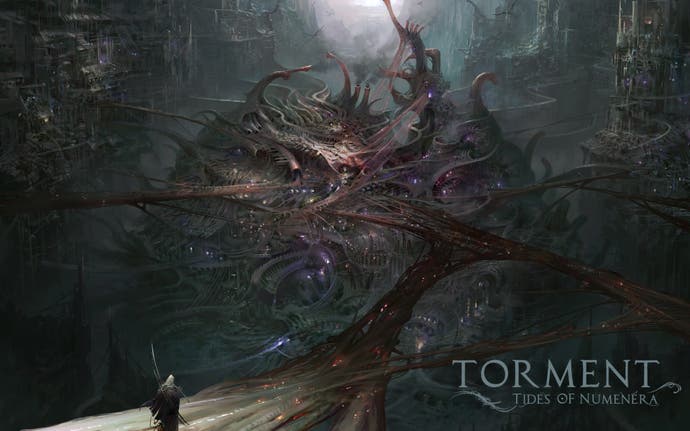
Five years later what was an exciting possibility - what seemed like a dream when I last recorded a Torment podcast - is now a reality. The taboo has been broken, a successor to Planescape: Torment has been made. And it's a good game, too. Of course there are criticisms, and I talk about mine with McComb and Heine in the longer recording, but let's not lose sight of what has been accomplished.
"I'm overjoyed with what we've done here," says McComb. "I'm really happy with the way this game has turned out, and I'm really happy with the way people are responding to it, because it makes me feel like we did our jobs - and we surpassed our jobs. But at the same time there's a lot of little things that obviously I would love to fix up. In retrospect there's decisions that were made that we could have made better or made differently that would have improved the quality of the game even more. But that ship has sailed."
Where the Torment idea goes from here remains to be seen. InXile has shown Torment can flourish as a theme independently of Planescape, and there are no shortage of ideas about where that theme could go next: somewhere else in Numenera, a new setting, a world created by inXile? That was the original idea after all. But whether there will be a next time depends on you. If the world wants a Torment 3 I have no doubt it will be made. I just hope it doesn't take 16 years this time to come about.
